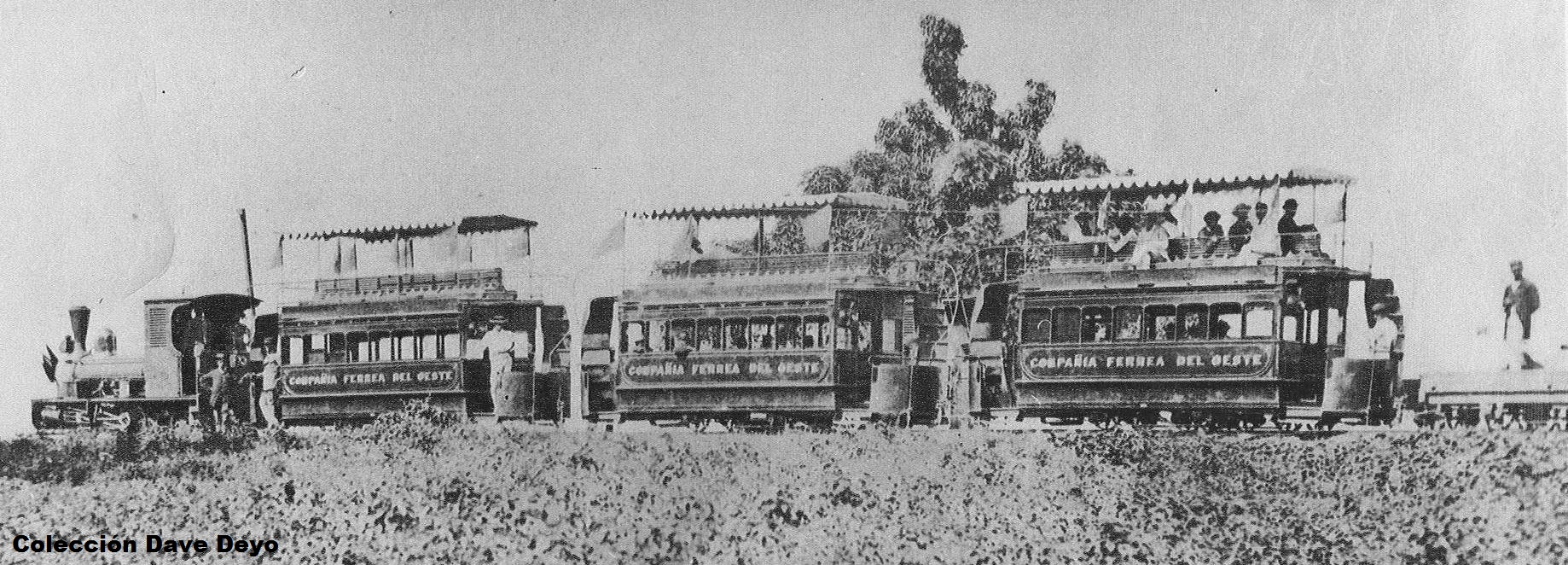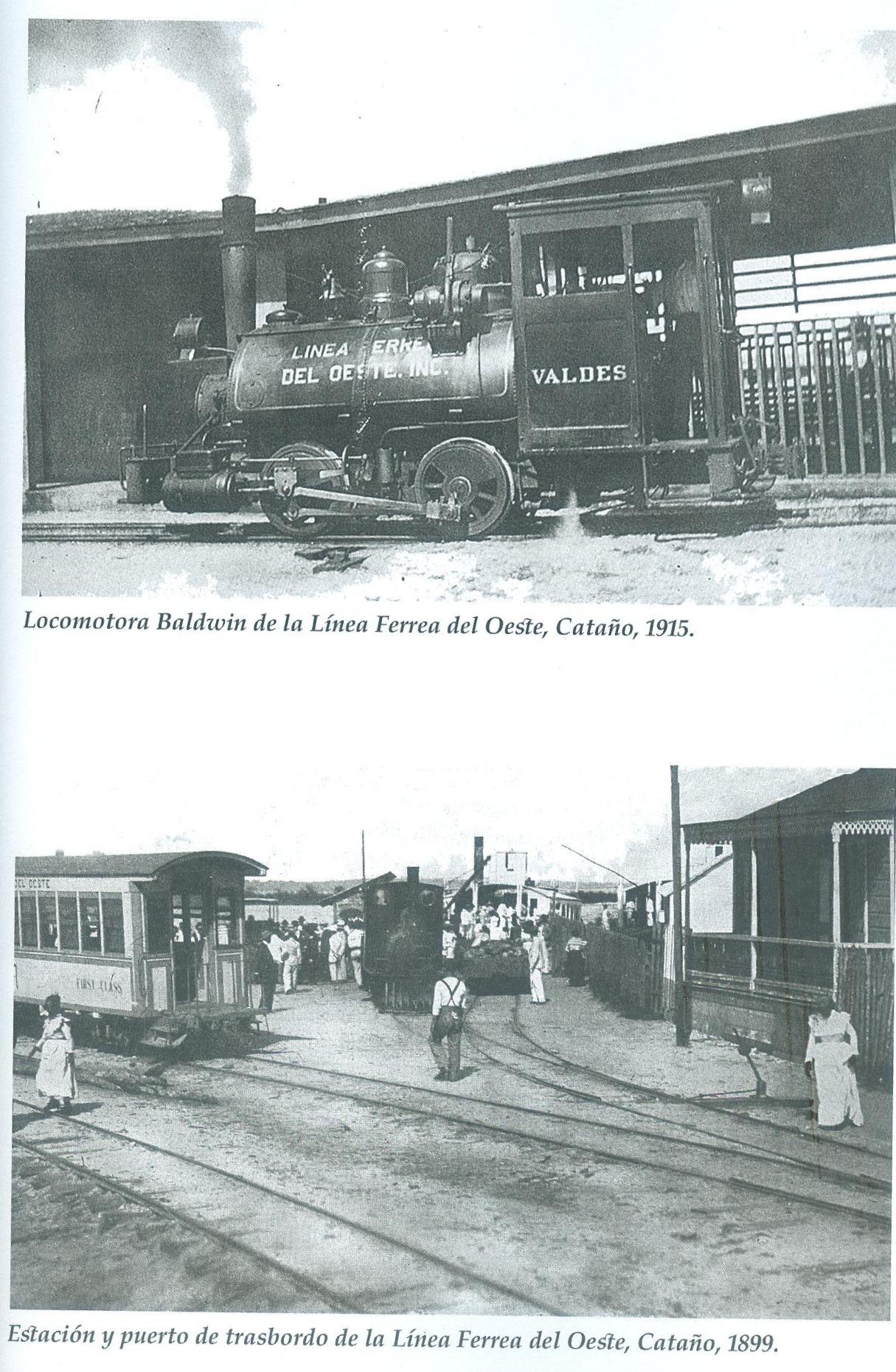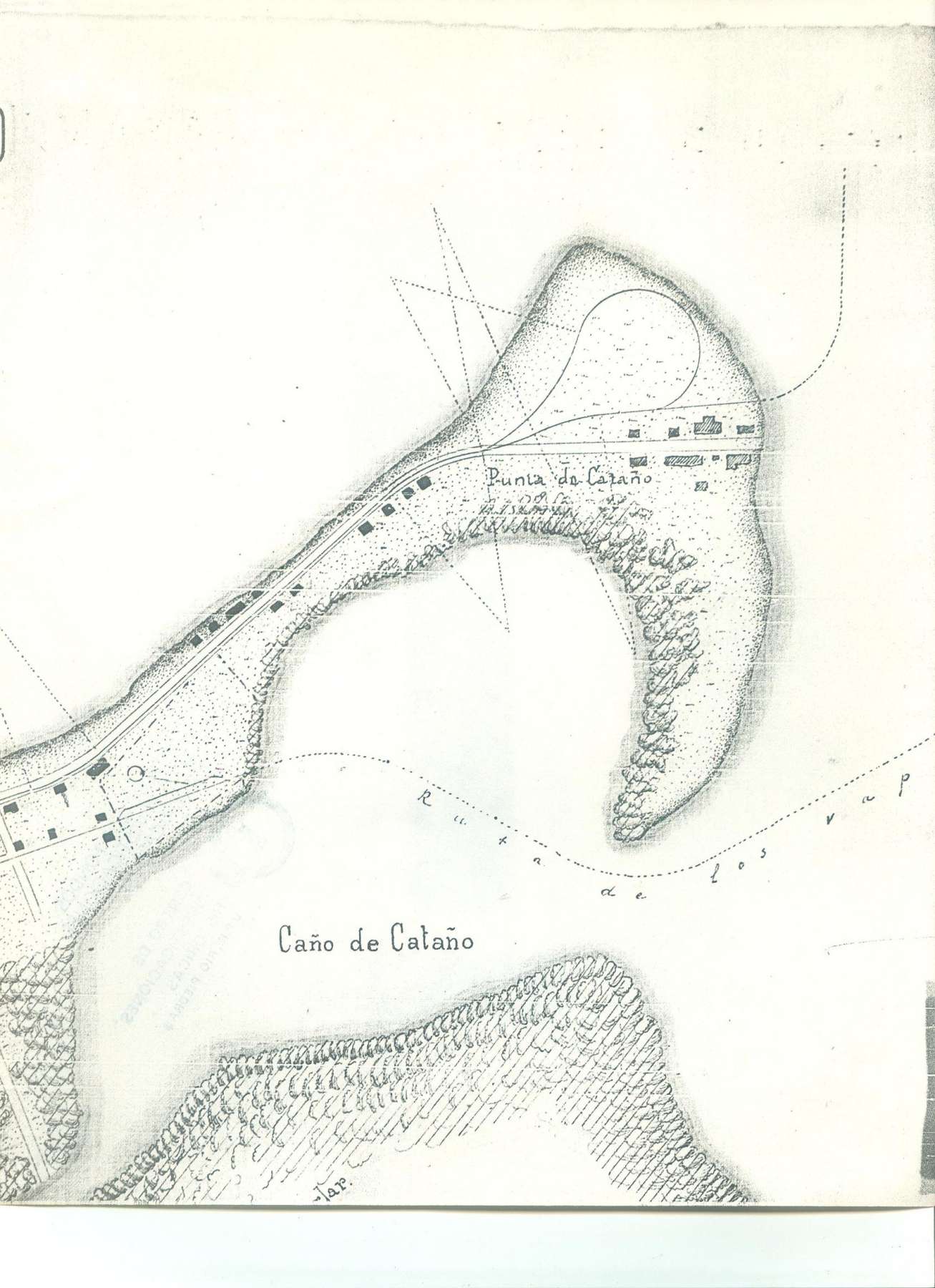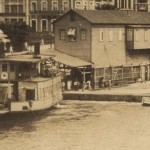All photos used with permission / Fotos usadas con permiso
This railroad operated between the towns of Bayamón, Cataño and San Juan. It included a ferry service between Cataño and San Juan. / Este ferrocarril dio servicio entre los pueblos de Bayamón, Cataño y San Juan. Incluía un servicio de ferry entre Cataño y San Juan.
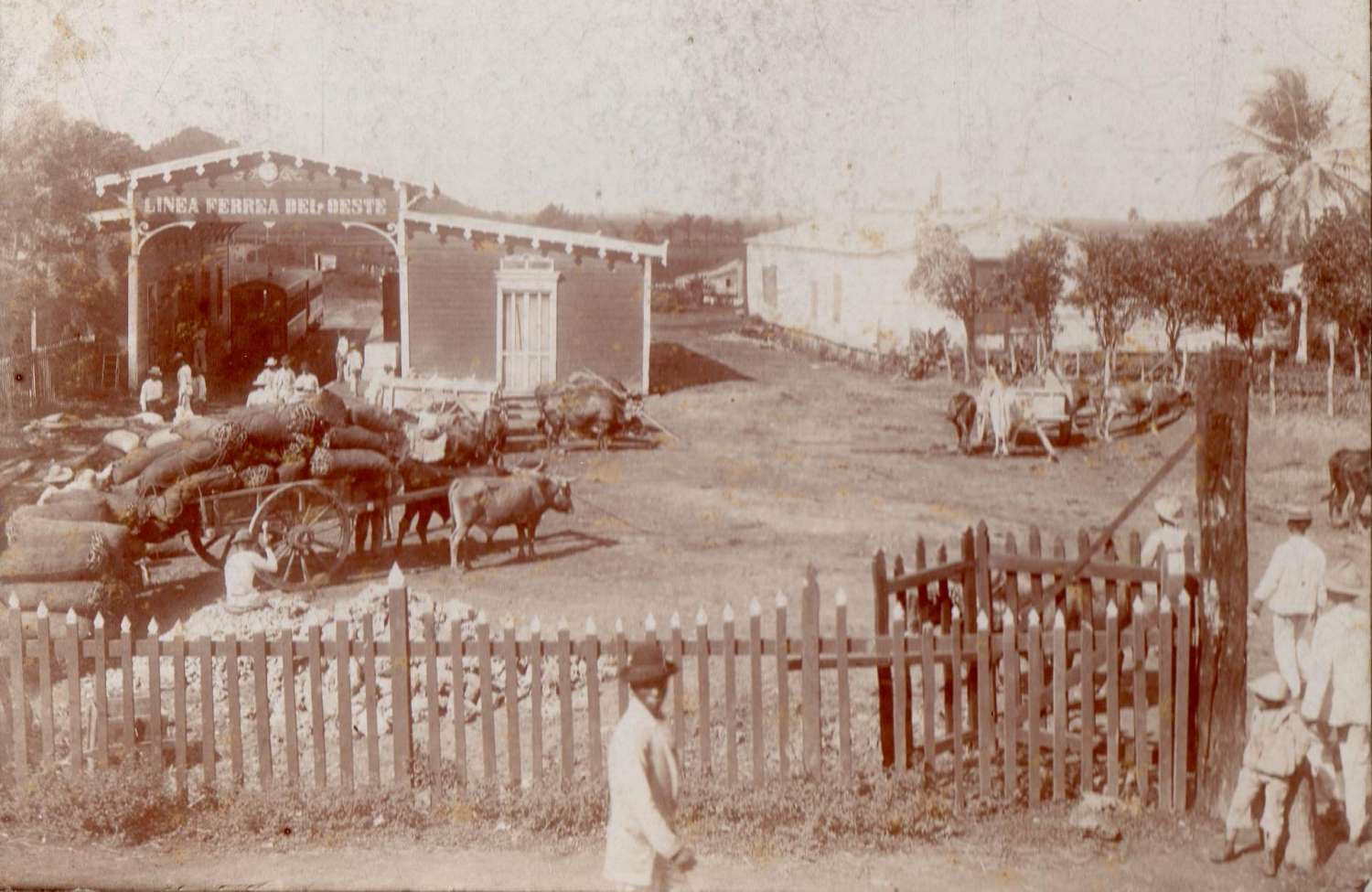 Estación de Bayamón / Jordan Brown Collection
Estación de Bayamón / Jordan Brown Collection
 Estación de Bayamón. Observe que los vagones tienen un segundo piso. El primer tranvía de sangre de Mayagüez tenía dos pisos. / Observe the two floor trams. Colección Ricardo Medina.
Estación de Bayamón. Observe que los vagones tienen un segundo piso. El primer tranvía de sangre de Mayagüez tenía dos pisos. / Observe the two floor trams. Colección Ricardo Medina.
—————
AN ENGLISH RAILWAY FERRY BOAT
The illustrations above represent a double screw steam ferry boat for transporting railway carriages, vehicles, and passengers, etc., designed and constructed by Messrs. Edwards and Symes, of Cubitt Town, London. The hull is constructed of iron, and is of the following dimensions: Length 60 ft.; beam 16 ft.; over sponsons 25 ft. The vessel was fitted with a propeller, rudder, and steering gear at each end, to enable it to run in either direction without having to turn around. The boat was designed for the purpose of working the train service across the bay of San Juan, in the island of Puerto Rico, and for this purpose a single line of steel rails, of meter gauge, is laid along the center of the deck, and also along the hinged platforms at each end. In the engraving these platforms are shown, one hoisted up, and the other lowered to the level of the deck. When the boat is at one of the landing stages, the platform is lowered to the level of the rails on the pier, and the carriages and trucks are run on to the deck by means of the small hauling engine, which works an endless chain running the whole length of the deck.
The trucks, etc., being on board, the platform is raised by means of two compact hand winches worked by worm and worm-wheels in the positions shown; thus these two platforms form the end bulwarks to the boat when crossing the bay. On arriving at the opposite shore the operation is repeated, the other platform is lowered, and the hauling engine runs the trucks, etc., on to the shore. With a load of 25 tons the draught is 4 ft.
The seats shown on the deck are for the convenience of foot passengers, and the whole of the deck is protected from the sun of that tropical climate by a canvas awning. The steering of the vessel is effected from the bridge at the center, which extends from side to side of the vessel, and there are two steering wheels with independent steering gear for each end, with locking gear for the forward rudder when in motion. The man at the wheel communicates with the engineer by means of a speaking tube at the wheel. There is a small deck house for the use of deck stores, on one side of which is the entrance to the engine room. The cross battens, shown between the rails, are for the purpose of horse traffic, when horses are used for hauling the trucks, or for ordinary carts or wagons. The plan below deck shows the arrangement of the bulkheads, with a small windlass at each end for lifting the anchors, and a small hatch at each side for entrance to these compartments. The central compartment contains the machinery, which consists of a pair of compound surface condensing engines, with cylinders 11 in. and 20 in. in diameter; the shafting running the whole length of the vessel, with a propeller at each end.
Steam is generated in a steel boiler of locomotive form, so arranged that the funnel passes through the deck at the side of the vessel; and it is designed for a working pressure of 100 lb. per square inch. This boiler also supplies steam for the small hauling engine fixed on the bulkhead. Light to this compartment is obtained by means of large side scuttles along each side of the boat and glass deck lights, and the iron grating at the entrance near the deck house. This boat was constructed in six pieces for shipment, and the whole put together in the builders’ yard. The machinery was fixed, and the engine driven by steam from its own boiler, then the whole was marked and taken asunder, and shipped to the West Indies, where it was put together and found to answer the purpose intended. – Engineering.
http://chestofbooks.com/crafts/scientific-american/sup3/An-English-Railway-Ferry-Boat.html. Copyrighted by StasoSphere, http://chestofbooks.com/ (See / Ver: http://chestofbooks.com/terms-of-use.html)
——————————–
—————–

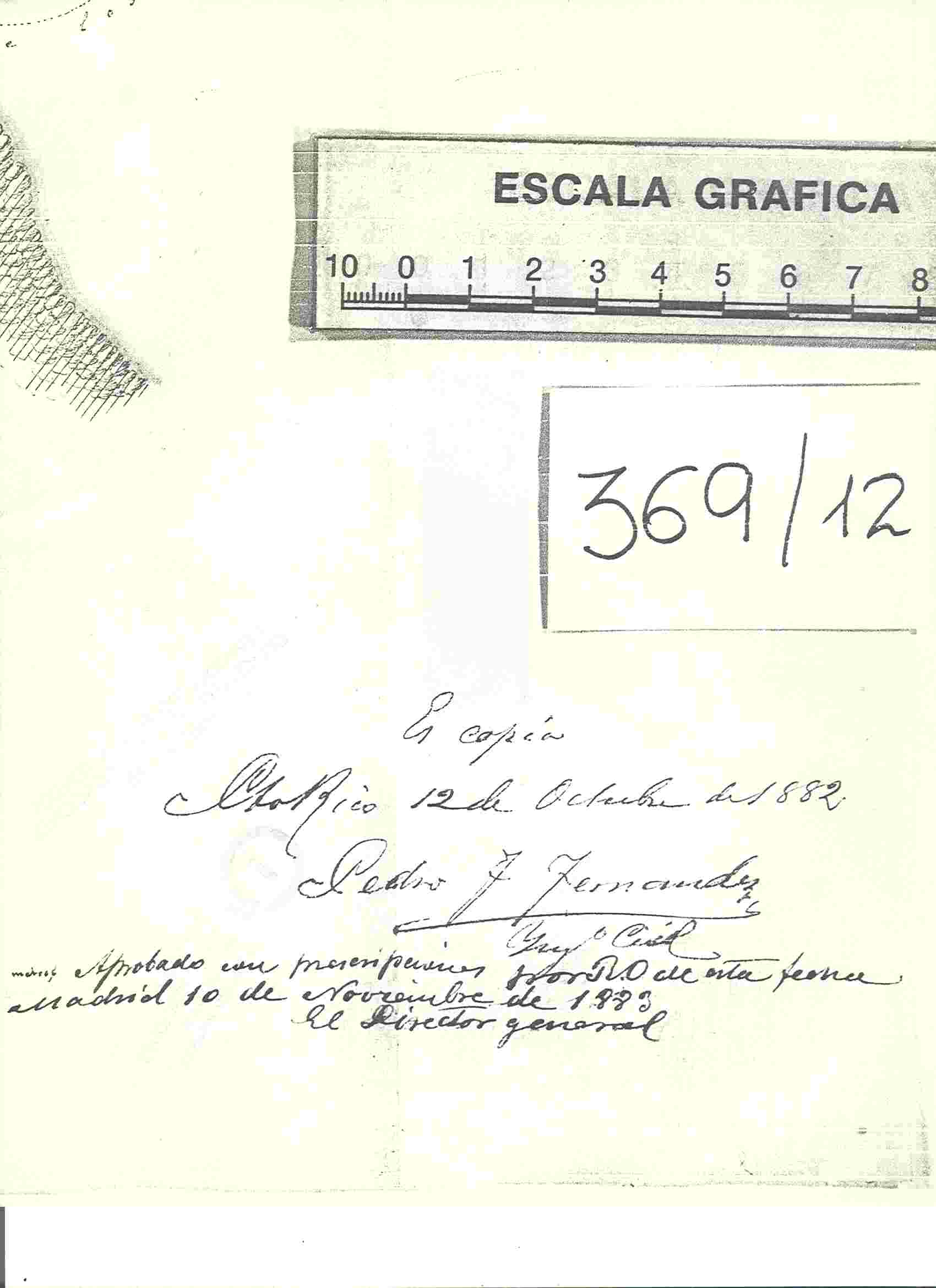 Centro de Investigaciones Históricas, Universidad de Puerto Rico, Proyecto de Tramvía de Bayamón a Cataño, 369/12. 1882. (Hoy se usa la palabra “Tranvía”)
Centro de Investigaciones Históricas, Universidad de Puerto Rico, Proyecto de Tramvía de Bayamón a Cataño, 369/12. 1882. (Hoy se usa la palabra “Tranvía”)
——————–
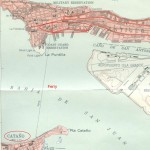 Dave Deyo Collection (U.S. Geological Survey, c1932 and c1940s). Today the railroad and ferry service between Bayamón and San Juan and the American Railroad do not exist. However the ferry service exists. / Hoy día el servicio de ferrocarril y ferry entre Bayamón y San Juan y la American Railroad no existen. Pero todavía existe el servicio del ferry.
Dave Deyo Collection (U.S. Geological Survey, c1932 and c1940s). Today the railroad and ferry service between Bayamón and San Juan and the American Railroad do not exist. However the ferry service exists. / Hoy día el servicio de ferrocarril y ferry entre Bayamón y San Juan y la American Railroad no existen. Pero todavía existe el servicio del ferry.
——————-
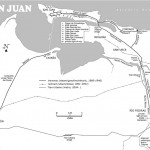 Ver / See: Compañía Línea Férrea del Oeste
Ver / See: Compañía Línea Férrea del Oeste
Used with permission. Copyright by Allen Morrison. See / Ver: – San Juan http://www.tramz.com/pr/sj.html The Tramways of San Juan, Puerto Rico by Allen Morrison, (Copyright © 2008-2108 Allen Morrison).
——————-
 Waldrop Photo Co Set No 13 Real Photo Card No. 2 – CATAÑO – El Tren de Cataño a Bayamon – Unused.
Waldrop Photo Co Set No 13 Real Photo Card No. 2 – CATAÑO – El Tren de Cataño a Bayamon – Unused.
From pr rr historian1:
A much better view of the Catano station and trackwork on the Linea Ferrea del Oeste. The
locomotive is an English import built by Black & Hawthorn, the first power for the common carrier railroad. I honestly think this little railroad was not only the first commuter and freight carrier on the Island, but also the one that rendered the best and most reliable service for the time period during which it operated. Coaches in the picture reflect the second and third groups purchased. The first coaches looked like stagecoaches, with an upper level with railing and removable canvas roof. An excellent schedule of trips on both the train and the ferries to San Juan, gave superb access to Viejo San Juan for residents of Bayamon and Catano and other close-by communities. Don Ramon Valdes gets an A+ for his little “trencito de Valdes”………….
I forgot to mention that this scene includes some evidence of activity loading or unloading a tiny gondola, most likely to be placed in the center section of the ferries for transport to San Juan. You can see the tiny four-wheeled car, and a man positioning or picking up bags………..
The second batch of passenger cars purchased for the LFO did very
much resemble Annie & Clarbell, only about double the length. And
Yes, some of the little narrower gauge engines on the Sodor railway
aren’t that much different. Infact, the little Black & Hawthorn
locomotives (one of which is leading the train in this photo) were
made in England.
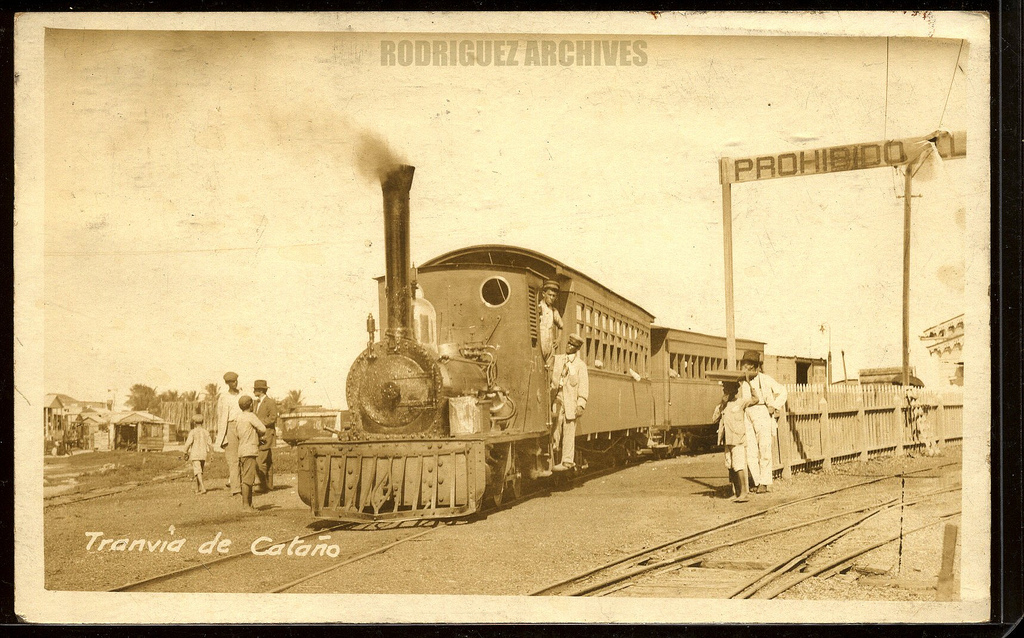 Moscioni RPPC (Attributed) – CATANO – Tranvia de Catano – Mailed SJ DEC 14, 1911.
Moscioni RPPC (Attributed) – CATANO – Tranvia de Catano – Mailed SJ DEC 14, 1911.
From pr rr historian1:
Another few comments: The locomotive has the lettering LFO for Linea Ferrea del Oeste
just below the cab window. It is possible that there is a number below the small builder plate too, but it is hard to identify. Also note that there is lettering on the door of the boxcar behind the two coaches. It also bears a number 3. I suspect it is lettered for a company on the railroad, as there is an “&” starting the lower row of lettering. While the coaches were lettered in full with the railroad name, the freight cars only had a simple LFO on them, meaning this little boxcar belongs to a shipper either on the railroad or in San Juan (via the ferry which could accomodate a few freight cars in the middle section). The first coach is probably FIRST CLASS as it has the upper row of windows to brighten the car inside. The trailing coach is probably SECOND CLASS, with lower ceilings and less window exposure. Note the barefeet too on the spectators to the right.
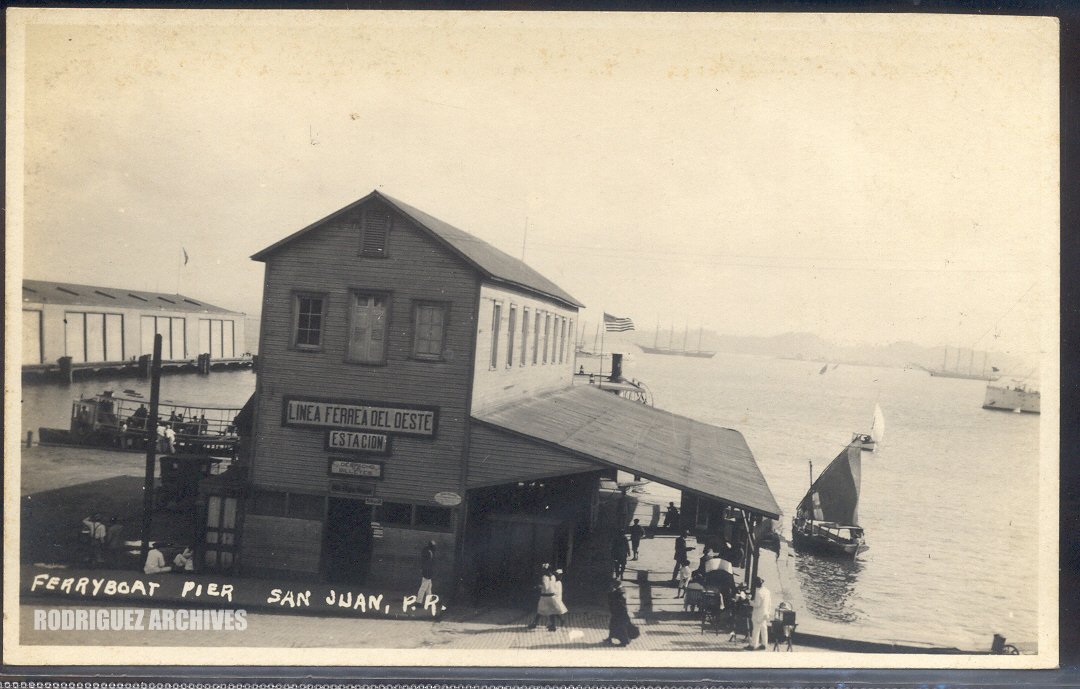 Hayman’s Tourist Shop RP Type 1 – SAN JUAN – Ferryboat Pier [Linea Ferrea del Oeste Estacion], San Juan, P. R.
Hayman’s Tourist Shop RP Type 1 – SAN JUAN – Ferryboat Pier [Linea Ferrea del Oeste Estacion], San Juan, P. R.
Our grandfather, Antonio Melendez, worked here as a ticket agent and clerk for some years. During lunch time, he would some times go to the Gonzalez Padin store, located a few blocks away at the main Plaza, and it was there that he met our grandmother, Maria Ortiz, who worked at Gonzalez Padin.
 MOSCIONI RPPC ~ SAN JUAN – Federal Building [Ferry Boat at Ferry Building] – Unused.
MOSCIONI RPPC ~ SAN JUAN – Federal Building [Ferry Boat at Ferry Building] – Unused.
This photo is great. It shows the ferry carrying a railroad car as it approaches the Linea Ferrea del Oeste station in front. We have another photo listed in this set that shows the front of the station. The railroad was being transported from Catano to S.J. to be rolled onto the rails inside the station and outside in front.
See / Ver: Colección José Luis Rodríguez y José Alfredo “FRED” Rodríguez, Archivo Histórico y Fotográfico de Puerto Rico. Very extensive photo collection of Puerto Rico. / Colección extensa de fotos de Puerto Rico. Photos used with permission. / Fotos usadas con permiso. http://www.flickr.com/photos/fredandrebecca/sets/
http://www.flickr.com/photos/fredandrebecca/
——————–
——————
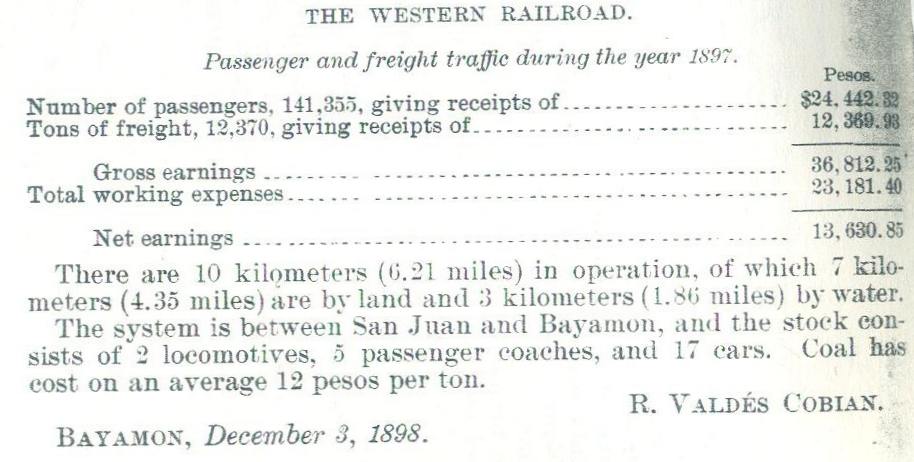 Report on the Island of Porto Rico by Henry K. Carroll, Washington, Government
Report on the Island of Porto Rico by Henry K. Carroll, Washington, Government
Printing Office, 1899, page 156
Breve historia de los servicios del tren y las lanchas de Cataño

